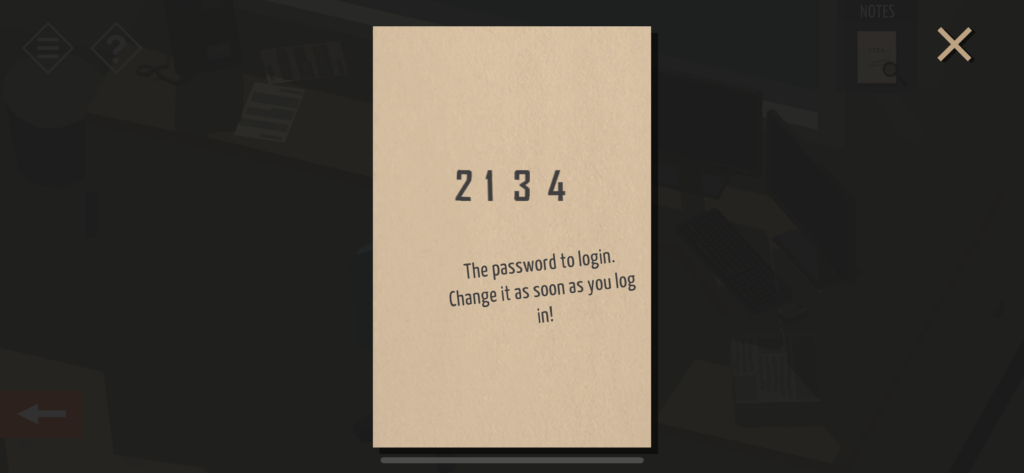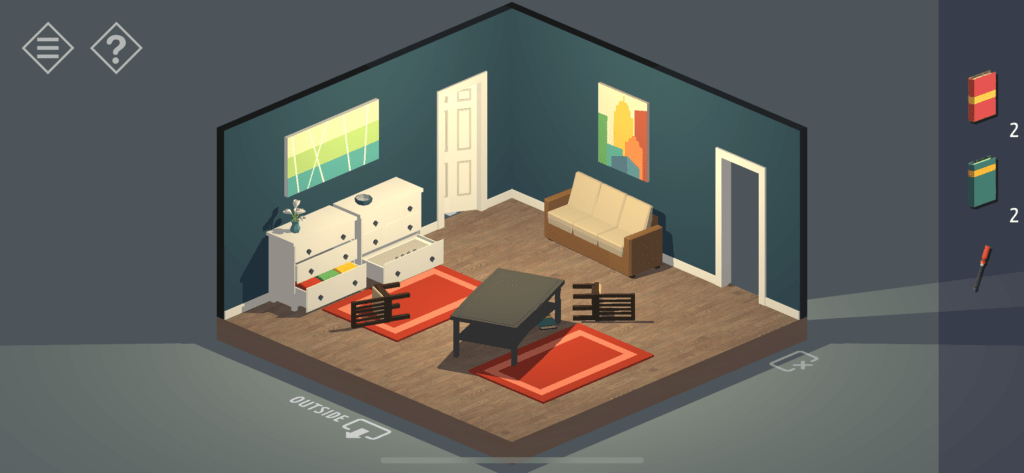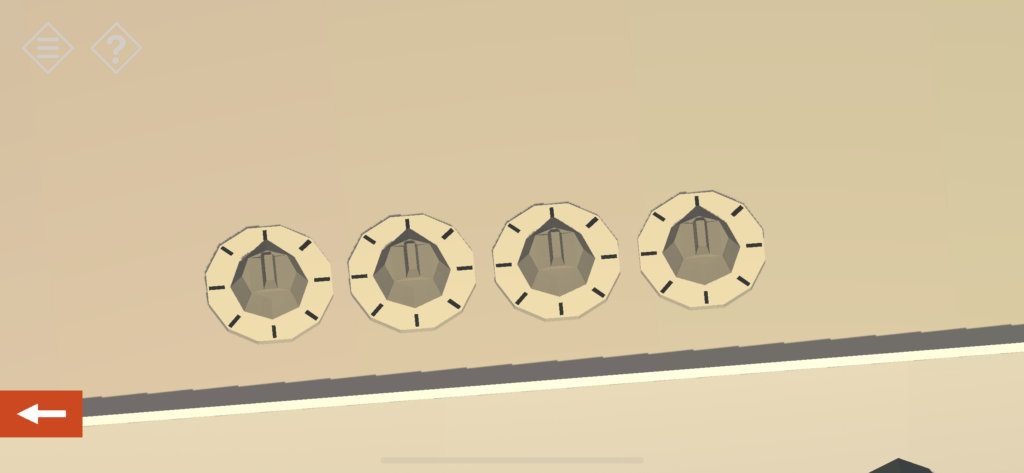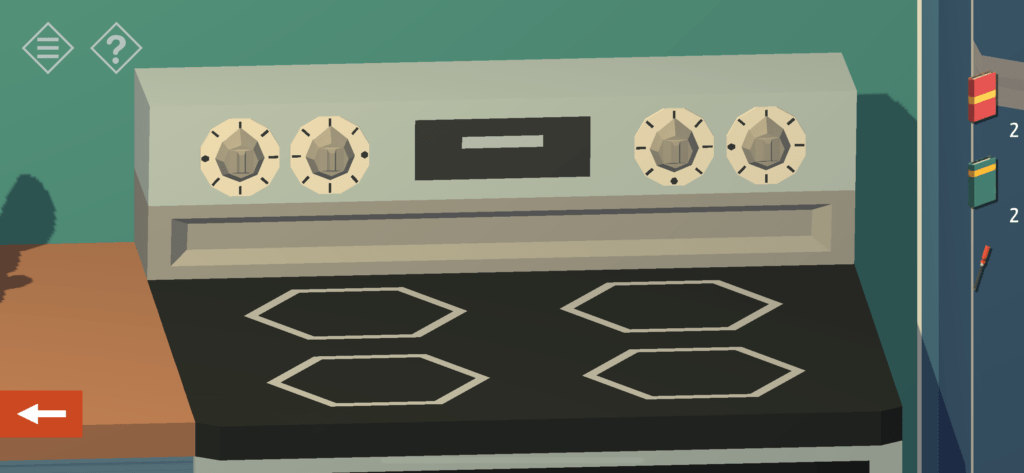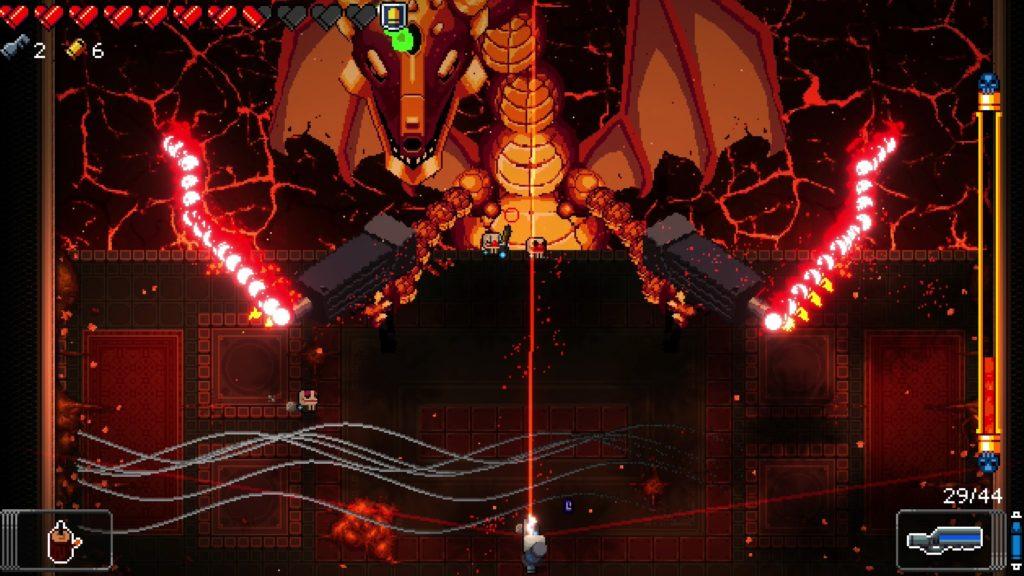Introduction
I played Tiny Rooms Story Mystery, a mobile game developed by Aleksandr Larko and Vasily Povalyaev in Unity. Based on my gameplay experience, the game is targeted at young adults who want to experience the mystery of an escape room on-the-go in a short, immersive digital experience. The narrative begins when the main player receives a mysterious letter from their father about coming to his hometown of Redcliff as soon as possible; upon arrival, it is clear that the town is deserted. To find your missing father, you begin to solve puzzles, slowly uncovering clues of his whereabouts and underlying town secrets.
Thesis
Tiny Rooms embeds mystery into the narrative through the gameplay mechanics of search which masterfully balances the art of concealment and discovery. The 3D architecture – mainly consisting of walls, the floor, and furniture – supports the mystery behind the storyline by defining challenges and weighing familiarity with surrealism to help players quickly understand that things are not as they seem (as referred to in “The Role of Architecture in Video Games” reading). The physical space within the game plays an important role in shaping the player’s emotional engagement with the storyline. By pushing and pulling players from the unknown, to the known, and back to the unknown, the game allows intrigue to persist in parallel with the protagonist unraveling clues and secrets of Redcliff.
Analysis
The core mechanic driving the narrative forward is search. Players rotate their points of view, zoom in on smaller objects, and interact with the environment in hopes of finding hidden clues providing them with the information/tools necessary to access the next chapter in the story (in the form of a new room, or a new setting completely). On a more meta level, search is also symbolic of broader thematic elements in the game, such as searching for answers, searching for the truth, and searching for a father who may or may not want to be found.
The mechanic of search allows for the dynamic of uncovery to unfold, leading players to question how clues connect to the broader environment. For example, searching throughout the physical space may uncover a document containing a password as seen below:
However, finding the password is only the first half of the puzzle. The player is then left to wonder what the password is for and what mechanisms in the environment are password-protected, inspiring the player to return to searching. The search mechanic and uncovery dynamic work in tandem to create a fluid cycle that maintains tension, keeping players on their toes without feeling lost or overwhelmed. Together, they ensure that the game does not feel like a disconnected set of challenges; rather, they develop the aesthetic of cohesion to create fun in the form of discovery.
The architecture in Tiny Rooms is not a backdrop as in most games; instead, the isometric view of the game creates an experience where the architecture is the entire world. The core mechanic of search is solely supported by the architecture’s ability to conceal tools and clues. In the game, players can swipe left or right to view different parts of the room. For example, from the below view in the game, we can see that the open drawers are the main feature to explore:
But this view obstructs our ability to view other features in the room. The below image is the exact same room from a different angle; now we see the bookcase as the focal point of the room.
We can see here that the act of switching views is critical to the game’s aesthetic of immersive discovery as players are encouraged to shift perspectives to uncover secrets hidden in plain sight. The architecture itself dictates what the player can and can’t see, and each arrangement of the physical walls creates an opportunity to reshape the experience by revealing hidden aspects of the room to further the narrative. The architecture’s ability to conceal defines an additional layer of challenge to the puzzle, requiring the player to be attentive and observant in order to get the full picture.
Thus, concealment is also what encourages exploration. As players navigate through different architectural perspectives, they must keep a mental map of the landscape in order to connect clues to solving puzzles. The various layouts of the rooms present a challenge in understanding what leads to where, but the game provides visual cues and affordances to counteract the disorientation of view switching. This allows the architecture to remain a key element of discovery without overwhelming the player with complexity. For example, the below image shows one of the clues uncovered in a drawer in the living room.
At the time, I didn’t know what the dials were for. It wasn’t until I came across the kitchen in the game that I noticed a similar pattern.
Despite the discovery happening in a completely different location, the layout of the walls and room design subtly prompted me to recall previously explored areas, making me think critically about how the puzzles I solved in one room might have implications in another. The symmetry between the dials in the drawer and the kitchen dials highlights the fact that the architecture is more than just a container for objects; it actively supports the mental map the player is forming as they navigate the game world.
Overall, the architecture reinforces the idea that the world is interconnected, and each small detail plays a part in unraveling the mystery. The environmental cues, combined with the puzzle-solving mechanics, create a narrative experience where the architecture actively drives the flow of the story forward, much like how the protagonist must actively search and connect the dots between clues to uncover the truth.
Ethics
One of the most significant shortcomings of Tiny Rooms is that it does not offer accessibility features besides the ability to change language, sound, and graphics settings. Tiny Rooms is an extremely visual game, requiring players to observe, search, input passwords, and interact with room objects. Although the visual nature of the game makes Tiny Rooms an aesthetically satisfying experience, it also poses a significant accessibility barrier to those with visual impairments, especially the blind.
If I were to improve Tiny Rooms, I would include an audio reader as a core accessibility feature. The audio reader would tell the player what objects are in the room and the current options to explore. Since Tiny Rooms requires switching perspectives and rooms, I believe that the audio reader feature would slightly alter the mechanics of the game to be more of a “choose your own adventure” style of game rather than a search game. For example, after reading aloud the different features of the room, the game would ask questions such as “would you like to explore the file cabinet or the bookcase?” “would you like to try to use the tool on the electrical dashboard or the computer?” “would you like to climb up to the roof or explore the kitchen?”. Incorporating an audio reader would also require modifying certain game mechanics to make them more accessible. For example, one of the passwords in the game is shape-based featuring different types of “squiggles”. Describing the difference between the squiggles could be difficult for someone with visual impairment to understand without feeling frustrated or overwhelmed; thus, this version of the game would be limited to more well-defined password patterns such as numbers, basic shapes, and directions (right, left, down, up). Additionally, sound design should be enhanced in this version of the game. Background sounds, such as changes in music or ambient noise, could indicate changes in the environment or the arrival of new clues. The game could use audio cues to signal important events or transitions (ex. Moving from room to room), making it easier for visually impaired players to track progress and remain engaged in the experience.
Ultimately, these changes open up the experience to a broader audience, allowing players with visual impairments to engage with the narrative and gameplay. These changes would not only make the game more inclusive but also demonstrate a broader commitment to accessibility and inclusivity in game design.



